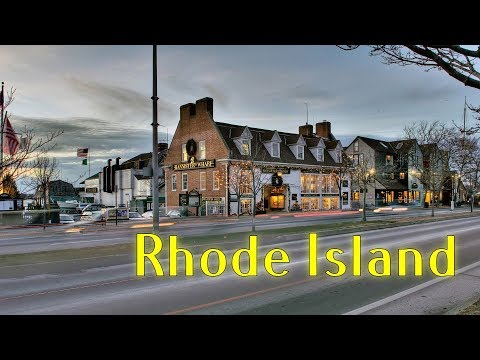Introduction: The Size of Rhode Island and its Significance
Rhode Island, a state located in the New England region of the United States, has often been referred to as the smallest state in the country. Its size, or lack thereof, has significant implications for various aspects of the state’s identity. While the term "smallest state" is commonly used to describe Rhode Island, it is important to delve deeper into the criteria used to measure state size and the factors that contribute to its unique identity.
Understanding the Criteria for Measuring State Size
When considering the size of a state, there are different criteria to evaluate its dimensions. One common criterion is land area, which measures the total landmass within a state’s borders. Another important criterion is total area, which includes both land and water. By examining these criteria, we can gain a better understanding of Rhode Island’s true size and its significance among other states.
Rhode Island: A Tiny State with a Rich History
Despite its small size, Rhode Island boasts a rich history that spans over four centuries. It was one of the original thirteen colonies and played a significant role in the American Revolution and the development of the United States. Rhode Island’s historical significance extends to its role in religious freedom, as it was a haven for individuals seeking religious tolerance during the colonial era. Despite its diminutive size, Rhode Island has left an indelible mark on American history.
Comparing Rhode Island’s Size to Other States
While Rhode Island is typically referred to as the smallest state, it is important to compare its size to other states for perspective. When examining land area, Rhode Island ranks 50th out of the 50 states. However, when considering total area, including both land and water, Rhode Island moves up to 43rd in rank. This comparison highlights the importance of evaluating different criteria to accurately determine Rhode Island’s size.
Rhode Island’s Land Area: Is it Truly the Smallest?
With a land area of approximately 1,034 square miles, Rhode Island is indeed the smallest state in terms of land area. It stretches just 37 miles east to west and 48 miles north to south. Due to its compact size, one can drive across Rhode Island in less than an hour. While it may be the smallest state in terms of land area, Rhode Island’s significance transcends its dimensions.
Examining Rhode Island’s Total Area, Including Water
When considering total area, which includes both land and water, Rhode Island’s size increases. The state’s total area encompasses about 1,214 square miles, accounting for the inclusion of Narragansett Bay and other bodies of water. This expanded measurement is a testament to Rhode Island’s coastal geography and reinforces the idea that size can be measured in different ways.
Does Population Density Affect Rhode Island’s Size Perception?
Rhode Island’s small size is further emphasized by its population density. With over 1 million residents, it is one of the most densely populated states in the country. This high population density amplifies the perception of Rhode Island as a small state, as the sheer number of people occupying its limited land area contributes to a sense of intimacy and close-knit communities.
How Rhode Island’s Size Impacts Its Economy and Infrastructure
Rhode Island’s small size has significant implications for its economy and infrastructure. The state’s compact dimensions make it easier for goods and services to travel efficiently, fostering a strong commerce sector. Furthermore, Rhode Island’s infrastructure benefits from its small size, enabling a well-connected transportation network. However, the limited land area also poses challenges, such as limited space for development and increased competition for resources.
Rhode Island’s Small Size and its Influence on Politics
Rhode Island’s small size plays a unique role in the realm of politics. With just two congressional districts, the state has a higher ratio of representation per capita compared to larger states. This allows for more direct engagement between constituents and elected officials, creating a close relationship between government and the people. Moreover, Rhode Island’s small size facilitates grassroots political movements and encourages active civic participation.
Debunking Misconceptions about Rhode Island’s Size
Despite being widely recognized as the smallest state, Rhode Island often faces misconceptions about its size. Some mistakenly believe that small size equates to insignificance, but Rhode Island’s rich history, vibrant culture, and influential contributions to the nation prove otherwise. It is important to separate size from significance and recognize the unique attributes that make Rhode Island a remarkable state.
Rhode Island’s Exceptional Attractions in Spite of its Size
Rhode Island may be small, but it is packed with exceptional attractions. From the picturesque coastal scenery of Newport and the historic landmarks of Providence to the pristine beaches of Block Island, the state offers a diverse range of experiences within a compact space. Rhode Island’s size allows visitors and residents alike to easily explore its captivating landscapes and cultural offerings without having to travel great distances.
Conclusion: Rhode Island’s Unique Identity as the Smallest State
While Rhode Island’s size may be diminutive compared to other states, it holds a unique place in American history and culture. Its small land area, combined with its rich history, coastal beauty, and tight-knit communities, contribute to the state’s distinct identity. Rhode Island’s size should not be seen as a limitation, but rather as an integral part of its charm and allure. Despite being the smallest state, Rhode Island stands tall in its significance and exceptional contributions to the nation.





